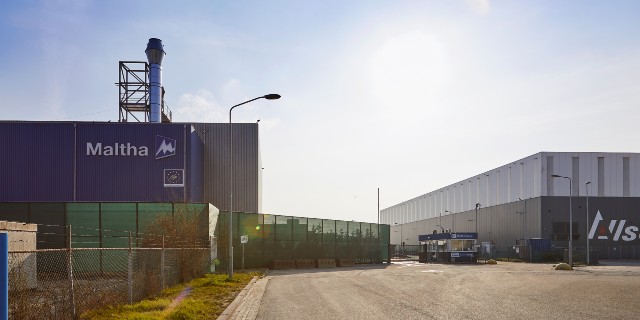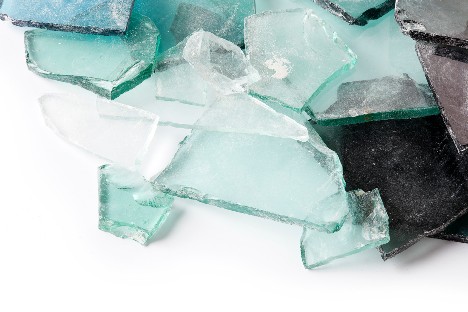Flat glass
Glass panes, insulating glass, car windscreens and mirrors are examples of flat glass. Most of it comes from greenhouses, buildings and cars. Flat glass is delivered to Maltha via recycling schemes, recycling centres, construction companies, glasshouse dismantling companies, glaziers and specialised collectors from the automotive industry.
In 2002 Maltha opened the world's first flat glass processing plant in Kaulille, Belgium. This factory has since been moved to Lommel and further expanded. Here, all types of flat glass are processed into various semi-finished products. The plant has a capacity of 200,000 metric tons of net product per year.
Flat glass can contain different types of impurities. There are glass-related impurities such as foils and metals. These impurities pose a problem for the production process of new glass and must therefore be removed carefully. Other contaminants not related to glass are not allowed in glass waste. These include metal, stone, wood, plastic and rubber. Due to the difference in impurities, flat glass requires a different processing process from hollow glass.
To remove all these foreign materials, the glass goes through a chain of advanced separation techniques. Among other things, the parts pass through magnets, sieves, cyclones, eddy current separators, laser and camera technology and even X-ray detection. The result is a batch of pure flat glass cullet. This forms the basis for valuable New glass products. To this end, we work closely with the flat glass industry.

In order to recycle glass waste properly, the incoming waste flow must meet a number of conditions. We call these acceptance conditions. These are guidelines that determine what kind and especially what degree of impurity is allowed in the glass waste.
If the degree of contamination is too high, the waste glass cannot be processed and must be rejected. Depending on the type and degree of contamination, the waste may be classified differently. For example, as construction and demolition waste or as bulk waste. The waste must then be processed in another (more expensive) way. Waste glass can also be contaminated with crystal and heat-resistant glass. The properties of these two specific types of glass have a negative impact on the quality of new glass. Crystal is glass with an enormously high lead oxide content, which means it is not permitted to be used as a raw material for new glass. Heat-resistant glass has a much higher melting temperature. Therefore, it is not suitable as a raw material for new glass. It can cause quality and safety problems in the production process.
The value of your waste glass is therefore largely determined by its degree of purity. Good collection methods and proper separation according to the acceptance conditions are therefore definitely worthwhile. Collectors also use these conditions to determine the quality of your waste.
|
Acceptance conditions Hollow flatt glass |
Download |
Maltha can receive glass by lorry or by ship. For deliveries by lorry, it is important that the glass can be deposited loose. In case of delivery by ship, we plan this so that the ship can be unloaded.
Deliveries in a different way are possible after consultation. Please contact us.


